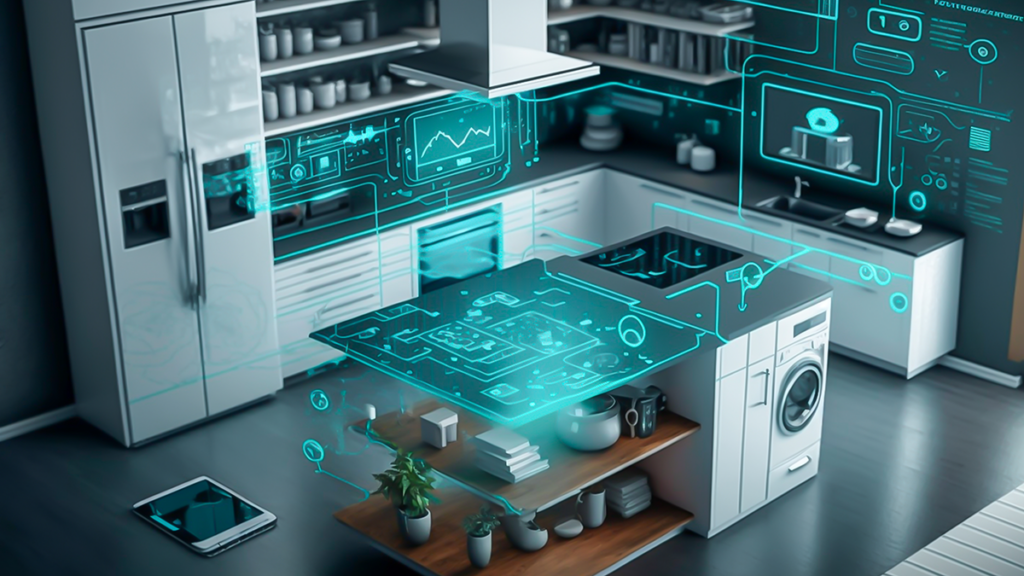As the broader implementation of IoT gains traction outside of the purely industrial sector, the world is beginning to how IoT, alongside AI, plays a crucial part in the race to automate processes.
With staff shortages, rising costs, an aging population; the motivations for making making everything from a factory to a fast food restaurant more efficient and cost-effective are therefore obvious.
Although the idea of smart robots may come to mind when thinking of an IoT-enabled kitchen in a commercial setting, IoT can offer other, significant, if not less dramatic, changes within the restaurant sector that help optimise the process.
So let’s explore how intelligent kitchens are being used, and could soon be used, and the benefits they could bring.
IoT in Kitchens
Integrating IoT technology into kitchens can create a smart workspace with automated and optimised processes. This innovation offers multiple benefits, including inventory level tracking, understanding customer preferences, and forecasting demand for popular menu items. Access to such detailed data enables chefs to reduce food waste, improve customer service, and cut down on operating costs.
As mentioned early, process automation is a big facet of implemeting IoT into kitchens. Tasks like inventory management and monitoring cooking temperatures typically require manual labour in the kitchen. Yet, with IoT technology, these tasks can be automated. Equipment can continuously monitor ingredients to ensure freshness and autonomously manage food orders and storage. Cooking temperatures are also automatically adjusted, eliminating the need for manual checks.
Equally, efficiency optimisation smart kitchens allow for the reduction of operational waste by electronically monitoring orders. Insights into customer preferences help restaurants optimise their menu offerings based on data-driven decisions, minimising waste.
Improving the customer experience, important for things like fast food restaurants, can work through enabling the provision of tailored experiences for customers. With access to detailed data, intelligent kitchens can quickly adapt to the preferences of regular customers, offering personalised menu suggestions or preparing for their requests efficiently.
Challenges associated with smart kitchens
While smart kitchens offer numerous advantages, two significant concerns need attention: the cost of implementation and the requirement for staff training on new technologies. The financial outlay for updating kitchen infrastructure and the time required to ensure staff are proficient with new tools must be balanced against the benefits of IoT integration in culinary settings. However, as technology progresses and becomes more affordable, intelligent kitchens are set to become standard in the restaurant industry.
Upgrading to smart kitchen technology represents a significant initial investment but promises to streamline operations in the long term. Such efficiencies can reduce daily workloads and speed up production, often offsetting the initial costs for businesses with the resources to invest in forward-thinking technology. However, smaller operations may currently find such upgrades financially challenging.
The introduction of smart kitchen technology also poses challenges for some restaurant owners, particularly in training staff. The shift from manual systems to IoT-enabled processes typically involves a steep learning curve. Comprehensive training is essential to ensure staff are comfortable and proficient with the new technology.
Outside of implementation challenges, there are ongoing challenges associated with IoT more generally that restaurant owners would now have to also consider if they began implementing IoT into their operations.
A more obvious one is technical challenges. As with any technology, there’s the possibility of system failures, software glitches, or connectivity issues, all of which could disrupt operations. Therefore, having backup plans and regularly checking system functionality is crucial.
But a more specific, and potentially costly and difficult one would be data security. The collection of detailed customer data by intelligent kitchens necessitates prioritising data privacy and security. Restaurants must ensure compliance with data protection regulations and have robust security measures to prevent data breaches.
Overcoming these challenges may seem daunting, but with the right preparation and resources, they can be managed. Intelligent kitchens represent a significant investment in the future of the restaurant industry, and understanding these potential issues can help businesses prepare for possible challenges.
Intelligent kitchens have the potential to revolutionise restaurant operations, providing personalised experiences for customers while optimising daily tasks and reducing labour costs. However, restaurants should proceed cautiously when implementing these systems, taking into account both the financial investment and the need for staff training. Restaurateurs exploring the benefits of this technology should consider various IoT applications to their operations. The restaurant sector remains ripe for technological investment, and those who adopt these innovations early will position themselves ahead in the industry. The time is ripe for restaurants to embrace this futuristic approach to food service, heralding exciting times ahead for those ready to embark on this journey.
There’s plenty of other editorial on our sister site, Electronic Specifier! Or you can always join in the conversation by commenting below or visiting our LinkedIn page.
